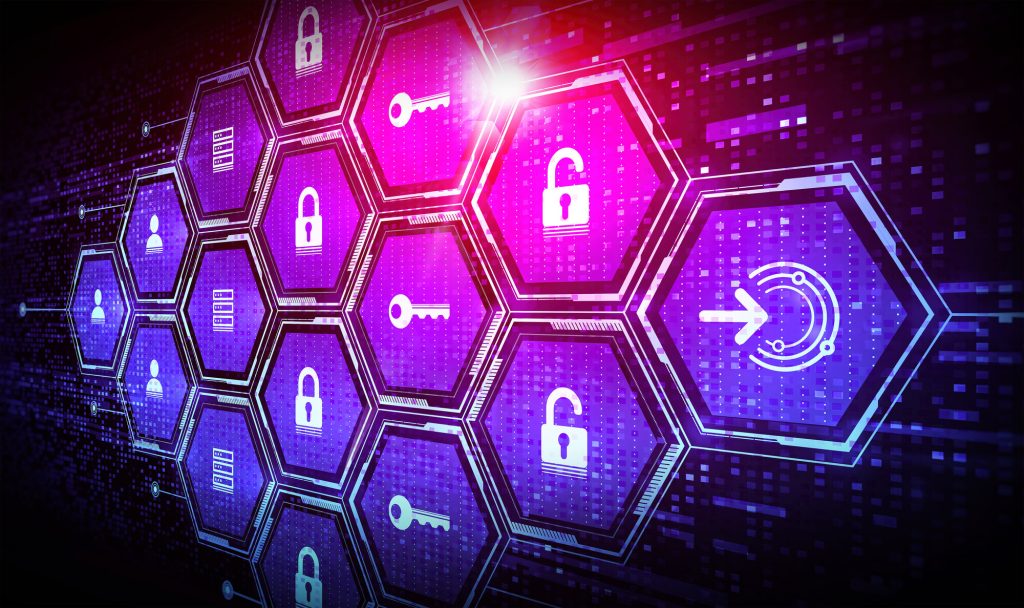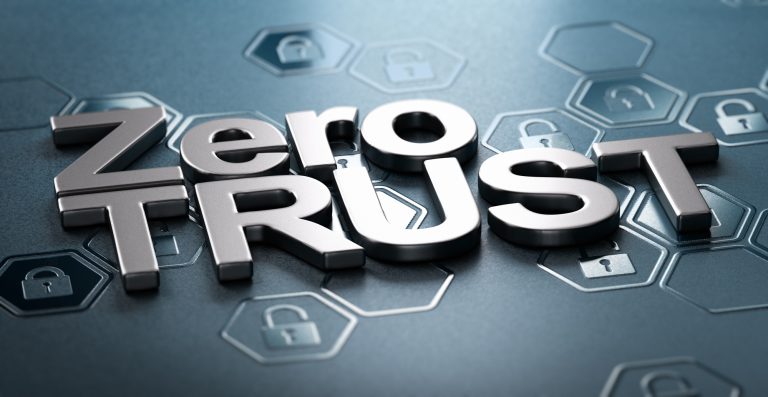- August 17, 2023
- Catagory Identity Management
Implement These Key Technologies to Improve Your Cybersecurity
As attack surfaces flourish and put identities and endpoints under increasing threat, there are several key cybersecurity technologies you can’t do without.
The good news is that even though managing security can seem overwhelming in today’s dynamic digital landscape, many of these cybersecurity technologies are being integrated and consolidated to improve management and overall visibility.

Manage and protect your endpoints
With the maturation of the internet of things (IoT) and a hybrid workforce, you must make protecting endpoints a priority. Endpoint detection and response (EDR) enables you to detect and respond to advanced threats by using behavioral analysis to detect attacks in real time. It allowes security analysts to proactively detect and respond to ransomware and other attacks that signature-based antivirus applications tend to miss.
Endpoint protection platforms (EPPs), meanwhile, enable you to integrate your technology stacks so that you can scale and cover your ever-growing number of endpoints, as well as handle newer types of threats, including the latest malware. EEPs are leveraging artificial intelligence and machine learning to anticipate threats before they can gain a foothold within your network.
Unified endpoint security (UES) pulls together various endpoint security tools into a single platform so you can better protect all your endpoints, including servers, PCs, and mobile devices. The unification provided by UES improves overall visibility.
One of the most common endpoints today are mobile devices, which be protected with mobile threat defense (MTD) to thwart real-time zero-day threats, phishing, and other attack techniques that look to steal identities and gain privileged access.
Secure the edge
Because most organizations have seen a proliferation of endpoints, they are likely grappling with the ramifications of edge computing, including the cybersecurity challenges it raises. Coupled with the increase in cloud computing, it’s important to implement a secure access service edge (SASE) framework, which combines software-defined wide area networking (SD-WAN) and Zero Trust security solutions into a unified cloud-based platform.
SASE securely connects users by giving them access based on their identity and devices, securing them no matter where they work. SASE is cloud-native, delivering both infrastructure and security solutions via the cloud, protecting all edges whether it is physical, digital, and logical.
A secure service edge (SSE) protects Software-as-a-Service (SaaS), web, and private applications by integrating a secure web gateway (SWG), cloud access security broker (CASB) and zero-trust network access (ZTNA) into a single cloud platform. SSE is another example of platform that unifies different tools to simplify management, as well as better support remote users.
Confirm identities
Authorized user access must be robust, which is why micro-segmentation is a critical cybersecurity practice. It limits lateral movement during a breach by segmenting workloads by identity, so that even if a threat actor obtains access through compromised credentials, there’s only so many places they can go, thereby mitigating the impact of the attack.
Because critical identity systems are increasingly vulnerable, it’s also critical to implement identity threat detection and response (ITDR) to safeguard your identity infrastructure from sophisticated attacks.
The cybersecurity stack is getting more complex and must scale with the rest of your IT infrastructure and cloud deployments. A managed service provider with a focus on security can help evaluate your immediately requirements for bolstering your cybersecurity as well as implement a long-term strategy that aligns with your business goals.
We’ve already talked a lot about the benefits of zero trust for securing your organization, but if you’re a small or medium-sized business looking at how to implement zero trust, it can be easy to get overwhelmed.
Your managed service provider (MSP) can be a great resource for implementing zero trust, and all things security, too. And while zero trust can greatly improve your security posture, it’s not the only thing you should be doing.
Implementing zero trust requires technical expertise and dedicated IT staff, and you’ll increase your odds of success if your break down your implementation in smaller, more manageable tasks. Different security vendors offer different frameworks, but regardless of the cybersecurity tools you deploy, implementing zero trust can be broken down into four elements:

- A system for tracking everyone on your network, their location and what applications and data they are accessing
- Selecting security tools, including next-generation firewalls, intrusion detection systems, and identity access management
- Comprehensive guidelines that outline who can access your network and resources, when and from where
- Network monitoring capabilities that track and log all traffic, both external and internal, that can establish a baseline to make it easy to spot suspicious activity and remediate it
A zero-trust model will greatly reduce your overall risk by limiting the impact and severity of a cyberattack. Even if you fall prey to an attack, implementing zero trust will reduce the cost to your business, including penalties related to regulatory compliance. Zero trust also increases visibility for your IT staff because it enables them to see who is on the network and granularly segment access – even employees are strictly managed to only access resources that are related to their responsibilities. In addition, what they are allowed to access requires multifactor authentication.
Implementing zero trust shouldn’t be your only strategy for securing your organization, but it has a high success rate of mitigating the damage caused by threat actors, especially social engineering attacks. A managed service provider can help you get started with the four key elements of zero trust as well as determine what other tools and polices can improve your security posture.
- May 12, 2022
- Catagory remote work
Disruption is an opportunity for improving security
The pandemic has been a challenge from security perspective, but it can also be viewed as an opportunity to review your best practices, your cybersecurity tools, and the role of a managed service provider.
The move to remote work two years ago was quite sudden, and left many organizations caught off-guard. If they were in the process to moving to more cloud-based services, the pandemic accelerated that migration. It also brough to light security challenges that could not be ignored because the number of endpoints suddenly grew exponentially with the bulk of their employees working from home.

As Dell’Oro Group Mauricio Sanchez recently pointed out in a blog post about the top five demands and challenges faced by CISOs, the massive disruption of pandemic compounded the rate of technology and threat change, and provided an impetus for looking at security problems in new ways and drove investment that would not have been possible in a non-pandemic environment.
While small and medium-sized businesses rarely have a C-level executive in charge of security or even a CIO, there are lessons they can take from observing the cybersecurity trends affecting large enterprises.
Relationships matter
Sanchez notes that the security vendor landscape is highly fragmented, so if a CISO is trying to sort through many options, don’t feel bad as an SMB if you’re feeling a little lost about what to implement and who to work with.
It’s important not to be tempted by new and shiny security products simply because they are new and shiny. The products and services you choose should be guided by an understanding of what needs to be protected in your organization, both on-premises and through your distributed workforce. Vendors do have a role in helping you secure your organization by developing security controls and technologies that will benefit you, but bi-directional communication essential.
For smaller organizations, it’s often best to engage with a managed service provider who can keep abreast of the rapidly evolving landscape of threats and available cybersecurity products. They can help navigate the options, evaluate your current security posture, and implement and manage what works best depending on the nature of your business.
Consider Zero Trust, but remember it’s a strategy, not a product
The shift to remote work has given Zero Trust increased traction, but whether you’re a big enterprise with a CISO or a smaller organization with limited IT resources, don’t confuse tactics and strategy.
As Dell’Oro’s Sanchez notes, Zero Trust is a valuable strategy but it’s not a product you can buy. Having a coherent strategy and understanding what needs protected will help you avoid wasting your IT budget on products do very little to improve security. Simply buying “zero trust” product could create a false sense of security, he says, and ultimately lead to your business being compromised.
Even if you’re confident that they are the right fit for your organization, buying the latest and greatest security solutions only go so far if you don’t have a firm handle on the fundamentals. A managed service provider with security expertise can help you best understand how a Zero Trust strategy can be implemented, and what tools you need to support it.
- May 18, 2021
- Catagory remote work
Remote Work Drives Zero Trust Security Adoption
The Zero Trust model for security isn’t new, but it’s getting more attention due to the massive shift to remote work.
Also known as the Zero Trust Network or Zero Trust Architecture, it’s a model that was first created more than 10 years ago by then Forrester Research analyst John Kindervag. It has since become more mainstream thanks in part due to the evolution of security technologies, but also because remote work has made it more challenging to secure enterprise networks.
The ABCs of Zero Trust

Zero Trust isn’t just a suite of technologies you buy. It’s a security model based on the foundational belief that organizations shouldn’t automatically trust anything inside or outside its perimeter—every connection must be verified, whether it’s an endpoint, switch or IP address if the organization is to prevent breaches.
Even before the massive uptick in remote work last year, the Zero Trust model recognized that organizations already have an increasingly porous network perimeter—it was no longer a castle surrounded by a moat. The old model assumed everything already inside was cleared for access. The Zero Trust model is a paradigm shift in that it assumes everything is a threat it until it’s certified safe. It also recognizes that once a hacker gains access via a single vulnerable spot, they can easily move around the enterprise network and attain increasing levels of access.
Zero Trust combines technologies with governance policies as to segment access at a granular level, taking into account the user, their location, and other information to decide whether to authorize any user, device or application. It’s not enough to authenticate the user, even if it is the CEO or CFO, but also the device they are using to gain access to the enterprise network, and where they are physically. Even if the user can be authenticated, policy may decide that the location—a coffee shop Wi-Fi hotspot, for example—isn’t secure enough. Or, it may decide that the user can’t access the network with a personal device, only one that was issued by the organization.
While technologies such as multifactor authentication, analytics, encryption, and file system permissions all play a role in a Zero Trust architecture, governance policies and good habits are just as critical to realizing its benefits, and that includes remote work environments.
Applying Zero Trust to Remote Work
For organizations to truly benefit from a Zero Trust model in the era of remote work, the same mindset must be brought into the home.
Whether they’re accessing the Internet for work or personal reasons, users need to apply a Zero Trust approach that keeps the wrong people out. And it’s more than just security awareness training or a strong password policy. Users at home should always be questioning every interaction online, including emails and texts with links, and communications that seem out of character by the sender, even if it appears to come from an official source. Phishing attempts and other attacks rely heavily on complacency, so a Zero Trust requires vigilance out of habit.
A common threat to enterprise network security in the remote work era is sharing passwords across work and personal devices and granting access to corporate devices to family members for personal use. The average person may think this is harmless, but a Zero Trust model requires that every employee think about their behaviour from a security perspective. Careless uses of a corporate device by a family member could compromise the enterprise network and lead to a data breach.
Zero Trust means password and device sharing a no-no. Every home user should have their own separate passwords and device as much as possible, and devices should either be for personal use or corporate use, not both.
These habits and overall mindset are essential to successfully applying a Zero Trust approach to security in the organization, regardless of where employees are doing their work. Having the right technology is a critical enabler, but you need the right governance policies and employee engagement if you’re to fully secure your business.




 Latest Blogs
Latest Blogs FAQ
FAQ